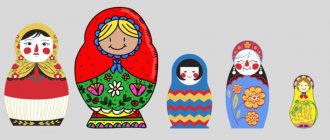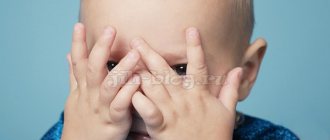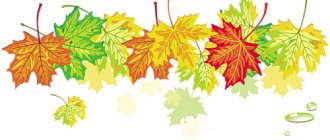Progress of the game:
Teacher in front of the children sitting at the table. There is a house on the table, from the window
which a bear cub is peeking out.
Teacher. Oh, whose face appeared in the window?
The children answer that it is a bear. The teacher takes him out from behind the house and draws the children’s attention to how the bear purrs when greeting them. Then he asks the children to purr in the same way .
Suddenly the bear hides behind the house.
Teacher: Teddy bear, playful Teddy bear!
Where are you? Where are you? Answer me!
Teddy bear, Naughty Teddy Bear!
Where are you? Where are you? Show yourself!
The bear's head appears in the window again. He shakes his head and purrs. Children imitate him. The display game is repeated at the request of the children . Various characters familiar to children can hide. And every time the teacher encourages the children to imitate the “voices”
these characters.
№ 3 "Finger Game"
Goal: to introduce children to theatrical activities ; teach them to combine
words with movements.
Equipment: finger theater .
Progress of the game.
Children are invited to go on a trip around the world. They must figure out where their path will lie - through the desert, along a mountain path, through a swamp, through a forest, a jungle, across the ocean on a ship - and change their behavior accordingly.
№ 7 “Mishka came from a walk”
Goal: to develop object-based game actions; form
accompanying speech.
Equipment: teddy bear, sled, crib, high chair, set of clothes for
bear cub (pants, felt boots, coat, hat)
.
Progress of the game:
Using a counting rhyme, the driver is selected. He leaves the room. The children agree on what and how they will portray. The driver returns and asks:
“Where have you been, boys and girls? What did you do?"
The children answer: “We won’t tell you where we were, but we’ll show you what we did.”
.
Children show the actions they came up with.
During the game, the teacher first advises what and how to depict.
When the children get used to it, he only suggests what to depict, and they decide for themselves how to do it.
6. Trip around the world
Target. Develop the ability to justify one’s behavior, develop faith and imagination, and expand children’s .
Progress of the game.
Using a rhyme, a child is selected to play the role of king. The remaining child workers are divided into several groups (3 — 4)
and agree on what they will do and what work they will be hired for. Then they approach the king in groups.
Workers. Hello King!
King. Hello!
Workers. Do you need workers?
King. What can you do?
Workers. Guess it!
Children, acting with imaginary objects, demonstrate various professions: cooking, washing clothes, sewing clothes, embroidering, watering plants, etc. The king must guess the profession of the workers.
If he does it correctly, he will catch up with the fleeing children . First
the caught child becomes king. Over time, the game can be complicated by introducing new characters (queen, minister, princess, etc.), as well as inventing the characters of the characters (king - greedy, cheerful, evil; queen - kind, grumpy, frivolous).
№ 6 "Trip around the world"
Target. Develop the ability to justify your behavior, develop faith and
imagination, expand children's .
Progress of the game.
With the help of a rhyme, a child is selected who invites the children to the “birthday”
. Guests come one by one and bring imaginary gifts.
With the help of expressive movements and conventional play actions, children
must show what exactly they decided to give.
No. 5 “King”
(version of the folk game)
Goal. Develop actions with imaginary objects, the ability to act
agreed upon.


